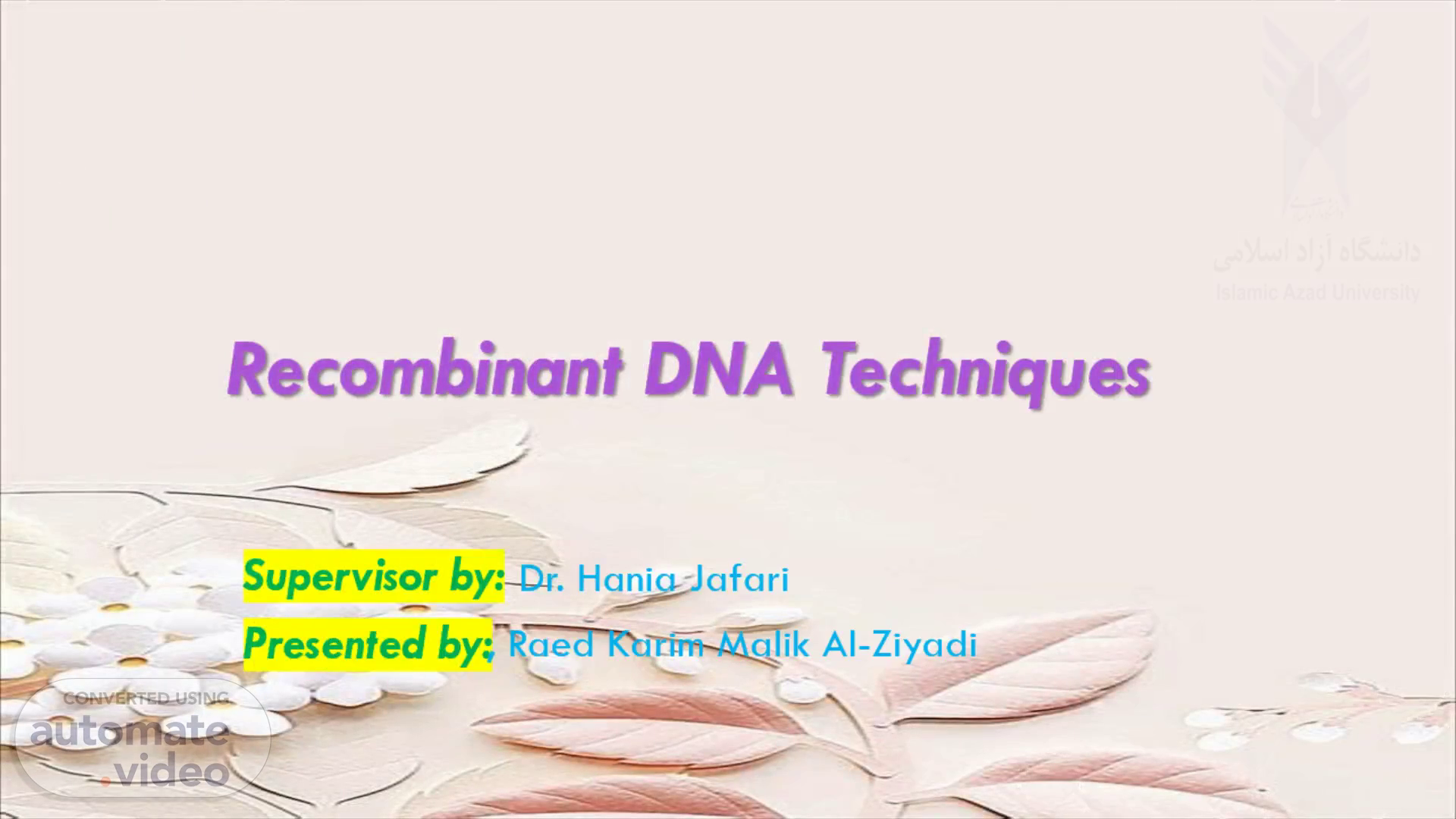
عرض تقديمي في PowerPoint
Scene 1 (0s)
Recombinant DNA Techniques. Supervisor by:. Presented by:.
Scene 2 (11s)
Recombinant DNA technology involves using enzymes and various laboratory techniques to manipulate and isolate DNA segments of interest. This method can be used to combine (or splice) DNA from different species or to create genes with new functions. The resulting copies are often referred to as recombinant DNA. Such work typically involves propagating the recombinant DNA in a bacterial or yeast cell, whose cellular machinery copies the engineered DNA along with its own..
Scene 3 (32s)
DNA cloning. In biology a clone is a group of individual cells or organisms descended from one progenitor. This means that the members of a clone are genetically identical, because cell replication produces identical daughter cells each time. . The use of the word clone has been extended to recombinant DNA technology, which has provided scientists with the ability to produce many copies of a single fragment of DNA, such as a gene, creating identical copies that constitute a DNA clone..
Scene 4 (54s)
AATT vector and donor DNA digested (cleaved) with restriction enzyme AATT TT AATT overhangs mixing DNA ligase added, seals overhangs AATT recombinant.
Scene 5 (1m 2s)
A cDNA library represents a collection of only the genes that are encoded into proteins by an organism. Complementary DNA, or cDNA, is created through reverse transcription of messenger RNA, and a library of cDNAs is generated using DNA cloning technology..
Scene 6 (1m 16s)
mRNA 1 reverse transcription reverse transcriptase 1 cleaved cDNA cDNA digestion with restriction enzymes vectors 1.